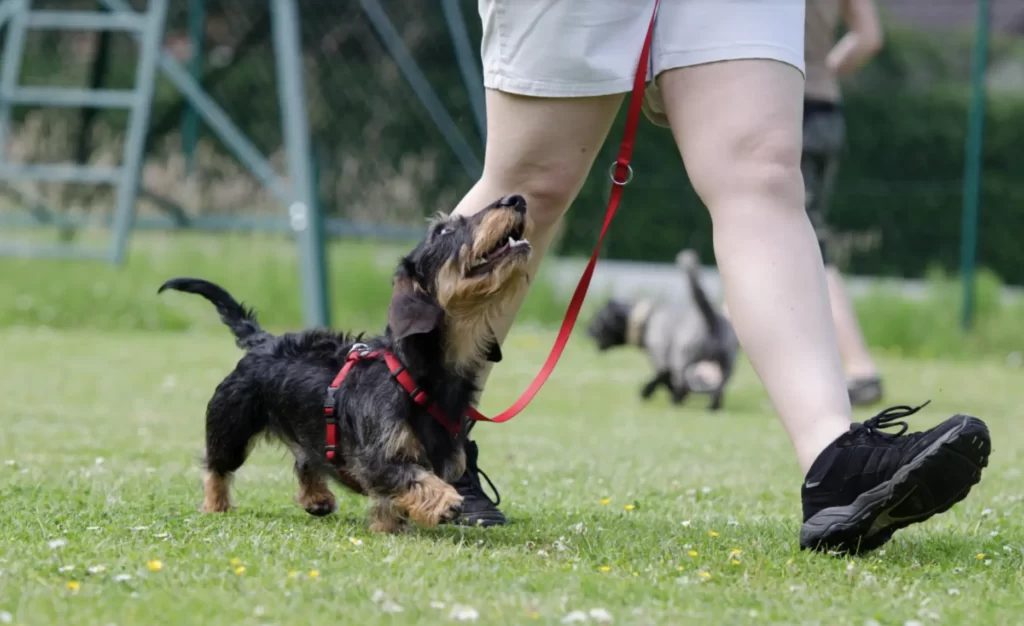
Training your dog is an essential part of responsible pet ownership. It not only ensures their safety but also strengthens the bond between you and your furry companion. Whether you have a new puppy or an adult dog, this comprehensive guide will provide you with practical tips and techniques to train your dog effectively. From basic obedience commands to advanced tricks, let’s dive into the world of dog training!
Begin with the Basic Commands
Teaching basic commands is the core of every effective dog training programme. Begin with simple commands such as “sit,” “stay,” “lie down,” and “come.” When your dog follows the instruction successfully, use positive reinforcement strategies like as treats, praise, and affection to reward them. Consistency and repetition are essential for helping your dog grasp and remember the commands.
Your Dog Should Be Socialised
Socialisation is critical in moulding your dog’s behaviour. From a young age, expose them to a variety of surroundings, people, and other animals. This will aid in their development as well-adjusted and kind buddies. Gradually increase the exposure, beginning with controlled conditions and proceeding to more difficult ones. Encourage pleasant relationships and keep a close eye on your dog’s behaviour to guarantee his or her safety and comfort.
Make use of Positive Reinforcement
Positive reinforcement is an effective teaching method that focuses rewarding desired behaviour rather than penalising undesirable behaviour. When your dog demonstrates positive behaviour, quickly reward them with goodies, praise, or playing. This pleasant association encourages people to engage in the behaviour again in the future. Physical punishment and severe training methods should be avoided since they might erode your trust and relationship with your dog.
Create a Routine
Dogs thrive on stability and routine. Create a daily schedule for eating, exercise, and training sessions. This enables your dog to anticipate and comprehend what is expected of them, helping the training process go more smoothly. Regular exercise is essential for keeping your dog intellectually and physically active. A fatigued dog is more likely to respond to training and is less prone to engage in destructive behaviour.
Address Unwanted Behaviours
Any unwanted behaviours your dog may display, such as excessive barking, leaping on people, or chewing on furniture, must be addressed. Determine the underlying reason of the behaviour and divert their focus to more acceptable pursuits. If your dog barks excessively, for example, teach them the “quiet” command and praise them when they stop barking. Modifying undesired behaviours requires consistency, patience, and positive reinforcement.
Increase Difficulty Gradually
Once your dog has learned the basics, steadily raise the level of difficulty in their training. Add more sophisticated instructions like “heel,” “leave it,” and “fetch.” To keep their minds bright and engaged, engage them in cognitively engaging activities such as puzzle toys or smell games. Remember to continually encourage excellent behaviour and to praise their accomplishments along the way.
If necessary, seek professional assistance.
If you run into problems or feel overwhelmed throughout the training process, don’t be afraid to seek expert assistance from a licenced dog trainer. They can offer professional advice, customised training strategies, and help with specific behavioural challenges. A skilled trainer may collaborate with you and your dog to achieve a successful training experience.
To summarise, Training your dog is an important aspect of being a good pet owner, and it enhances your relationship with your furry friend. This blog offers realistic dog training advice and practises. Positive reinforcement is vital for teaching fundamental instructions like as sit, stay, lie down, and come. Socialising your dog with different locations, people, and animals aids in their development. It is critical to establish a routine and address undesired behaviours. It is also explained how to gradually increase the difficulty level of training and when to seek expert support. Following these principles will allow you to form a deep relationship with your dog while also producing a well-behaved and happy companion.